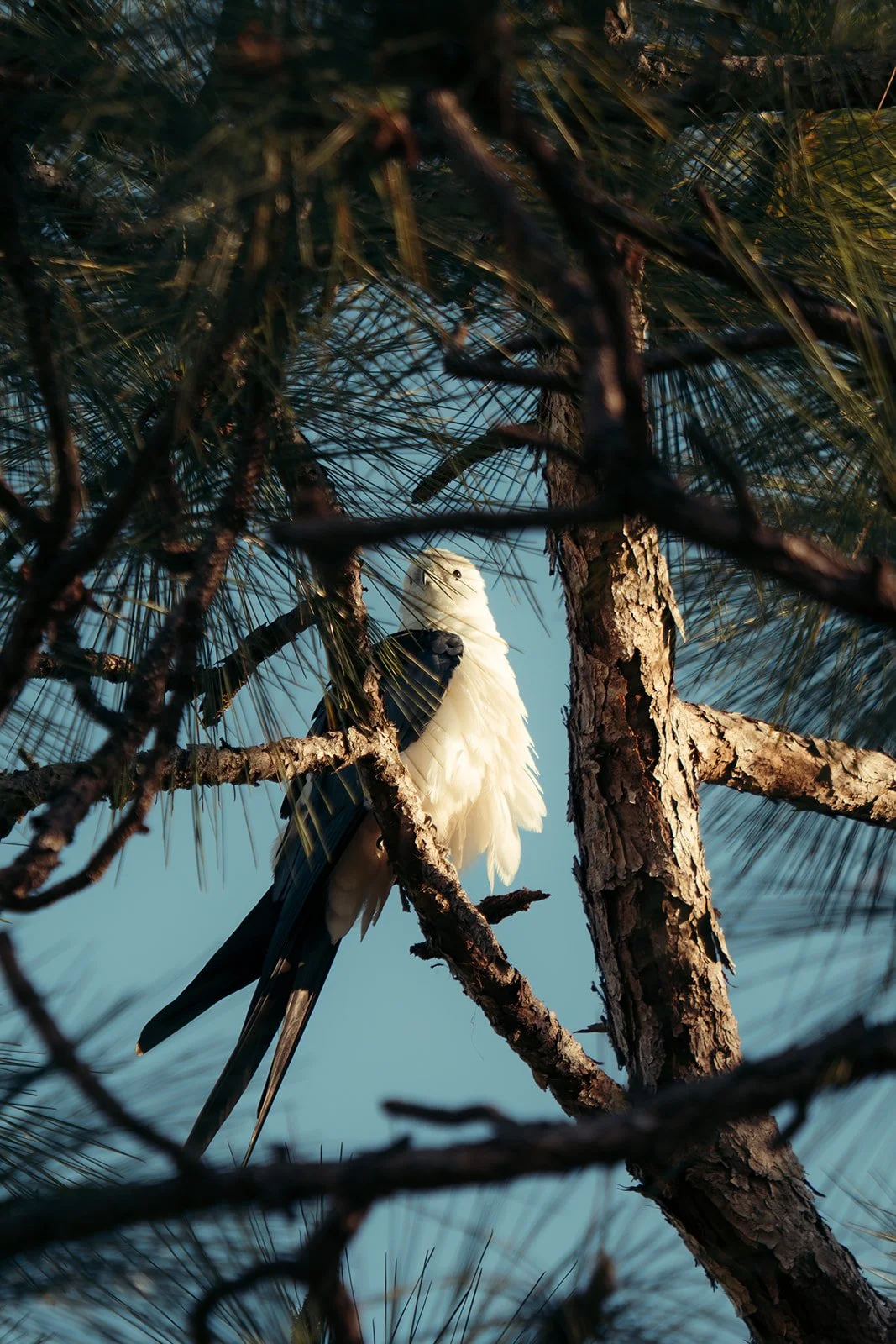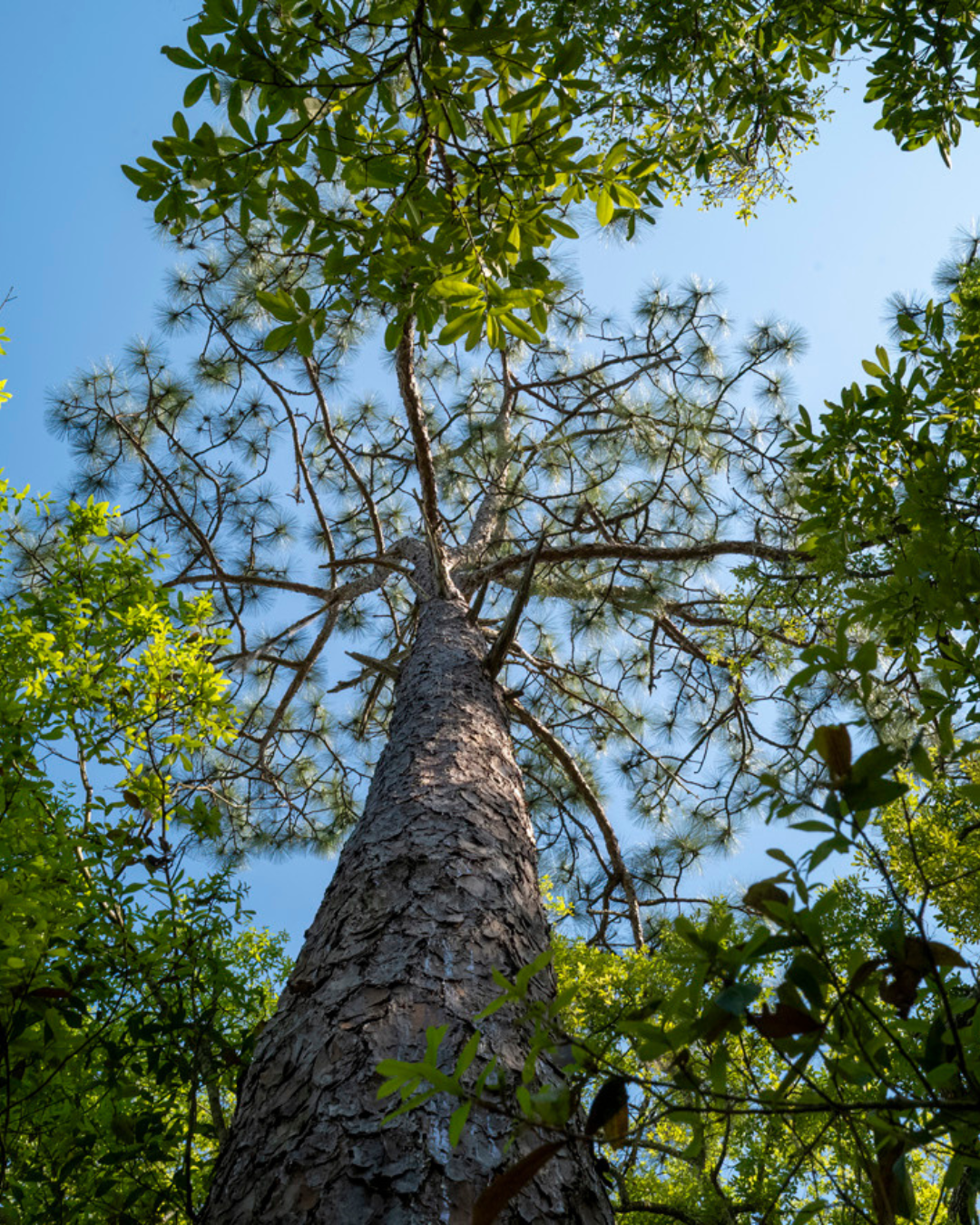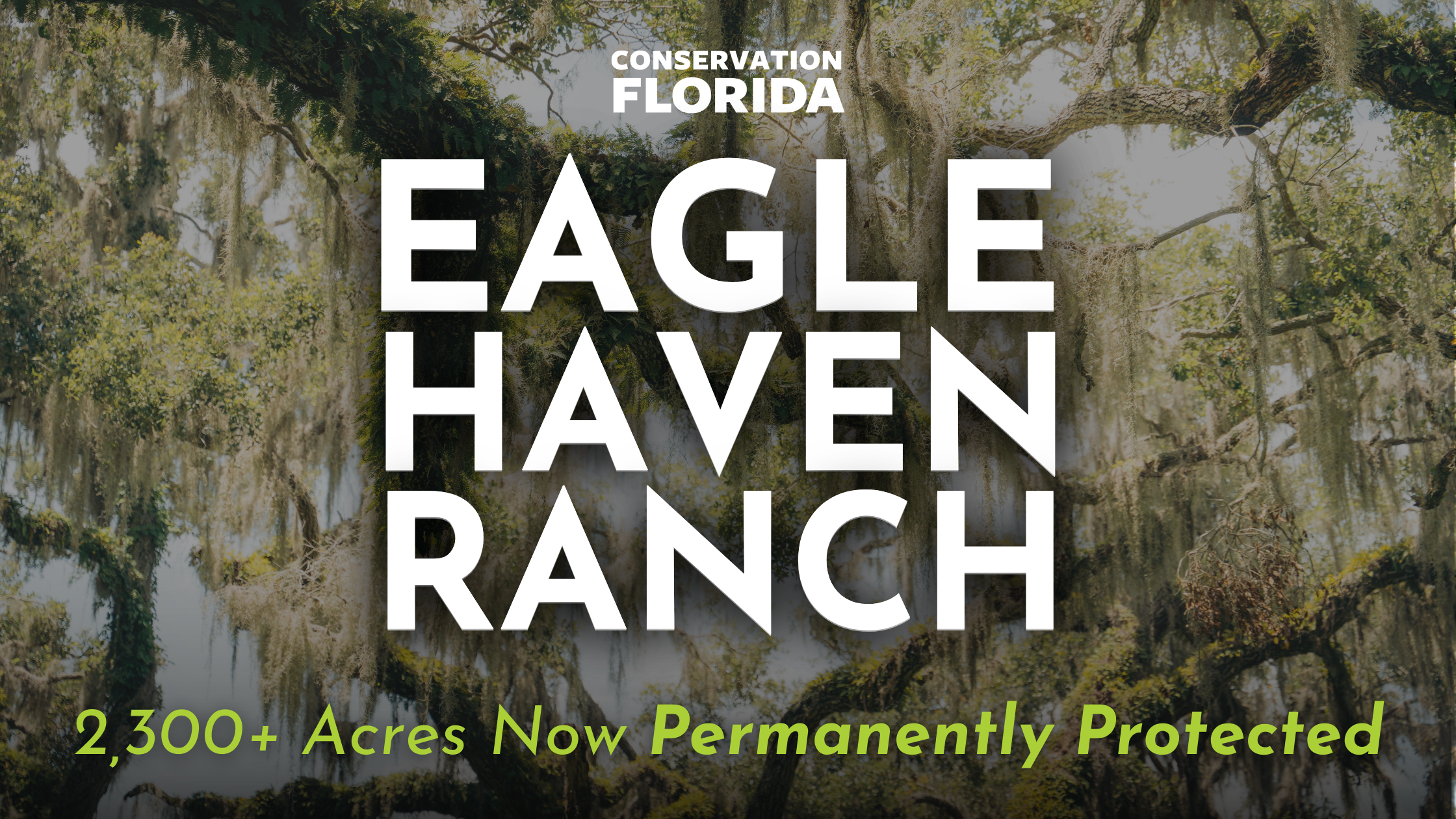A SAFE PLACE TO LAND
Photos provided by Anna Crocitto, Tim Barker, and Avian Research and Conservation Institute (ARCI)
If you’ve ever looked up on a summer day in Florida and spotted a black-and-white bird with a forked tail gliding effortlessly against the blue sky, chances are you might’ve seen a swallow-tailed kite. These graceful birds, sometimes called “sky angels,” travel thousands of miles each year, chasing warm winds and plentiful food.
You might have even seen a special kite named “Townsend!”
Why so special, you may ask?
This swallow-tailed kite checked in for a stay amongst a pine forest permanently protected by Conservation Florida near Ocala in Central Florida.
You could say he’s pretty close to our hearts.
Townsend is part of a tracking study led by the Avian Research and Conservation Institute (ARCI), which follows these birds on their remarkable journeys to better understand their migration patterns and the habitats they depend on.
Townsend was the last of the GPS-tracked swallow-tailed kites to begin his fall migration. On August 27, he set out on his journey!
He started south from the Savannah River in Georgia, spending his first night along the Altamaha River, a familiar area near his nesting territory.
From Georgia, he continued south to our home state of Florida where he found a peaceful refuge on Conservation Florida-protected land in Marion County - our Millpond Swamp conservation easement.
Townsend’s flight path southward, including a rest at Millpond Swamp.
On Millpond Swamp, he battled no bright streetlights or racing cars. Only the buzzing of bugs and the fresh fog of the morning.
A peaceful moment of his journey south.
For Townsend, Millpond Swamp offered a safe place to rest and refuel. For us, his visit is a reminder of why land conservation matters.
Swallow-tailed kites rely on Florida’s wetlands, forests, and open spaces to find food, raise their young, and safely migrate each year. When we protect those places, we’re not only safeguarding one species; we’re protecting entire ecosystems.
Florida is the stronghold for swallow-tailed kites in the United States. Once nesting in 21 states as far north as Minnesota, their numbers have declined sharply over the last century, with only about 15,000 remaining today. Most now breed here in Florida, making our state essential to the future of the species. By late summer, the young are ready to take flight, and the flocks begin to gather before making their long journey back to South America.
Most swallow-tailED kites now breed here in Florida, making our state essential to the future of the species.
For kites like Townsend, protected wild places aren’t a luxury - they’re a necessity.
Wetlands provide the frogs and insects that sustain them, tall trees offer nesting sites, and large forests give them space to rest before migration. As development and habitat loss continue, conserving these connected, protected spaces becomes even more urgent.
Conservation Florida’s work ensures that birds like Townsend have safe places to land - today, tomorrow, and forever. Through land conservation, we’re helping keep the skies full of these “sky angels.”
When Townsend soared over our protected land, he showed us what’s at stake - and what’s possible when we work together to keep Florida wild.
By September 1, Townsend had reached Cuba, where he stayed for four nights before flying to Cancún, Mexico. He has spent the past few weeks in Mérida, Mexico, and we expect him to continue south to South America soon.
We’ll be looking to the skies next season, hoping to see him again on his journey home.
Thank you to the partners who shared this story with us and are helping swallow-tailed kites like Townsend soar!
American Bird Conservancy (ABC)
The Avian Reconditioning Center for Birds of Prey
Cellular Tracking Technologies CTT GSM-GPS transmitters
Georgia Department of Natural Resources (GADNR)
Microwave Telemetry, Inc. Satellite transmitters
National Fish and Wildlife Federation (NFWF)
Orleans Audubon Society (OAS)
Ornitela GSM-GPS transmitters
PotlachDeltic Corporation
*Swallow-tailed Kites are captured, banded, and fitted with a trackers under State, Federal, and local permits held by the Avian Research and Conservation Institute (ARCI). ARCI partnered with American Bird Conservancy and Orleans Audubon Society to track kites like Townsend through funding from International Paper and the National Fish and Wildlife Federation. More on ARCI’s blog: https://www.arcinst.org/2025/07/17/swallow-tailed-kite-research-coalition-continues-to-improve-sustainable-forests-in-the-southeastern-u-s/
in case you missed it:
About Conservation Florida:
Conservation Florida is an accredited, nonprofit land conservancy dedicated to conserving the Sunshine State’s water, wildlife, wild places, and connecting a functional Florida Wildlife Corridor. Since its founding in 1999, Conservation Florida has saved more than 40,000 acres, serving all 67 counties in Florida, by prioritizing strategic and evidence-based land protection, education, and advocacy.
Follow us on social media @conservationflorida.

















